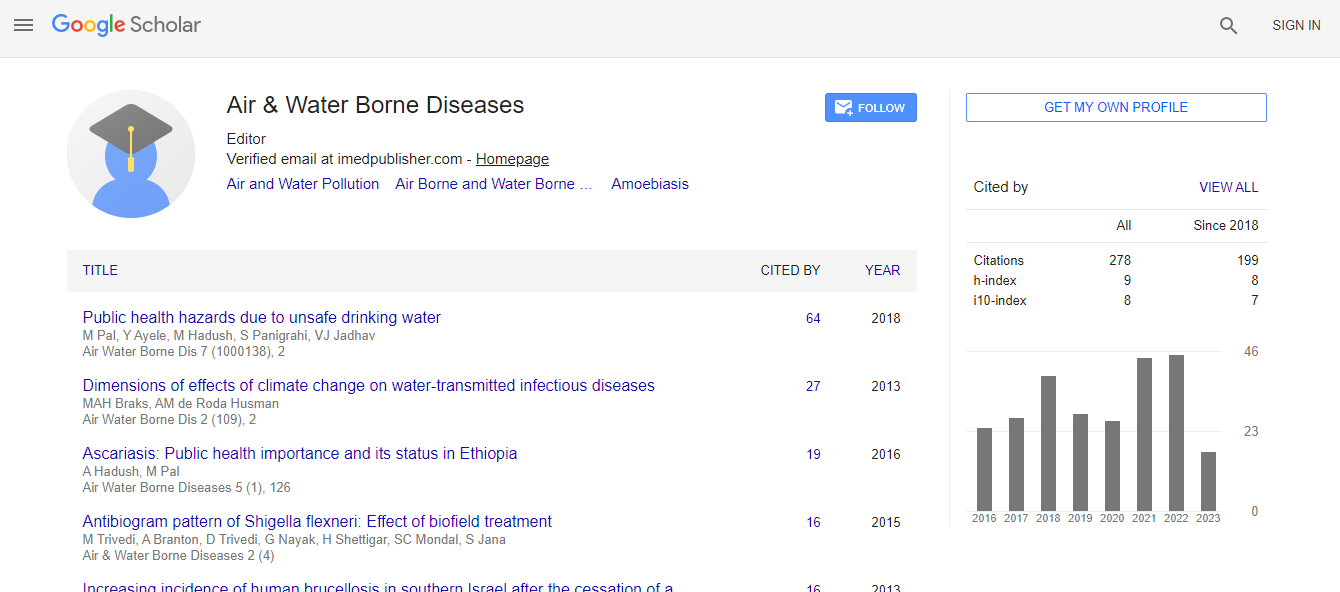Research Article
Microbial and Nutrient Contamination of Domestic Well in Urban-West Region, Zanzibar, Tanzania
Said A H Vuai*Department of Physical Sciences, The University of Dodoma, Tanzania
- *Corresponding Author:
- Said A H Vuai
Department of Physical Sciences
The University of Dodoma, P. O. Box 259, Dodoma, Tanzania
E-mail: saidhamadv@yahoo.co.uk
Received Date: December 19, 2011; Accepted Date: February 22, 2012; Published Date: February 23, 2012
Citation: Vuai SAH (2012) Microbial and Nutrient Contamination of Domestic Well in Urban-West Region, Zanzibar, Tanzania. Air Water Borne Diseases 1:102. doi:10.4172/2167-7719.1000102
Copyright: © 2012 Vuai SAH. This is an open-access article distributed under the terms of the Creative Commons Attribution License, which permits unrestricted use, distribution, and reproduction in any medium, provided the original author and source are credited.
Abstract
There is mushrooming of domestic wells in Zanzibar Town due to inadequate supply of tap water. The well water is used for domestic purposes including drinking. In many cases the wells are situated very close to pit latrines increasing the risk of contamination. This study attempted to assess the microbial and nutrients contamination in domestic well during dry and rainy season in the Urban-West Region of Unguja Island, Zanzibar. Nineteen domestic wells were sampled and analyzed for the microbial and nutrient quality of water. It was found that domestic wells were highly contaminated by both nutrients and coliform. The contamination was intensified during rainy season. Only 5% of the collected water samples met WHO and Tanzania standards for drinking water. This explains why in Zanzibar water borne diseases such as cholera and typhoid fever occur frequently. The major sources of contamination were found to be the pit latrines/ septic tanks. The degree of contamination was affected by the depth of a domestic well, and combination of number and location of a septic tanks surrounding a well at a particular location. It is recommended that frequent monitoring and treatment of the domestic wells could be a good solution to decrease the water born diseases.

 Spanish
Spanish  Chinese
Chinese  Russian
Russian  German
German  French
French  Japanese
Japanese  Portuguese
Portuguese  Hindi
Hindi 